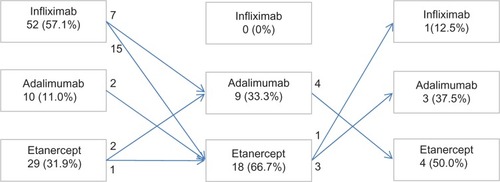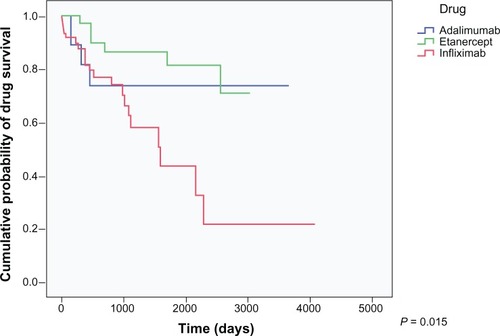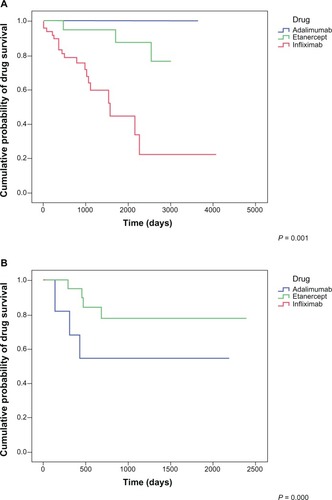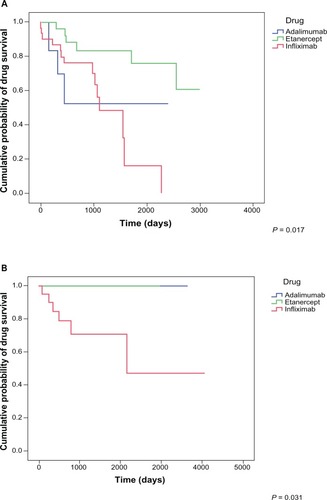Figures & data
Table 1 Patient demographics and therapy characteristics
Figure 1 Changes in the treatment of patients included in the study.

Figure 2 Drug survival probabilities for infliximab (n = 53), etanercept (n = 51), and adalimumab (n = 22) in the study population.

Figure 3 Drug survival probabilities for adalimumab, etanercept, and infliximab, naïve versus previous anti-TNF treatment.
Abbreviations: n, number; TNF, tumor necrosis factor.

Figure 4 Drug survival probabilities for adalimumab, etanercept, and infliximab, by age group.
Abbreviation: n, number.

Table 2 Predictors of survival of anti-TNF therapy in RA patients